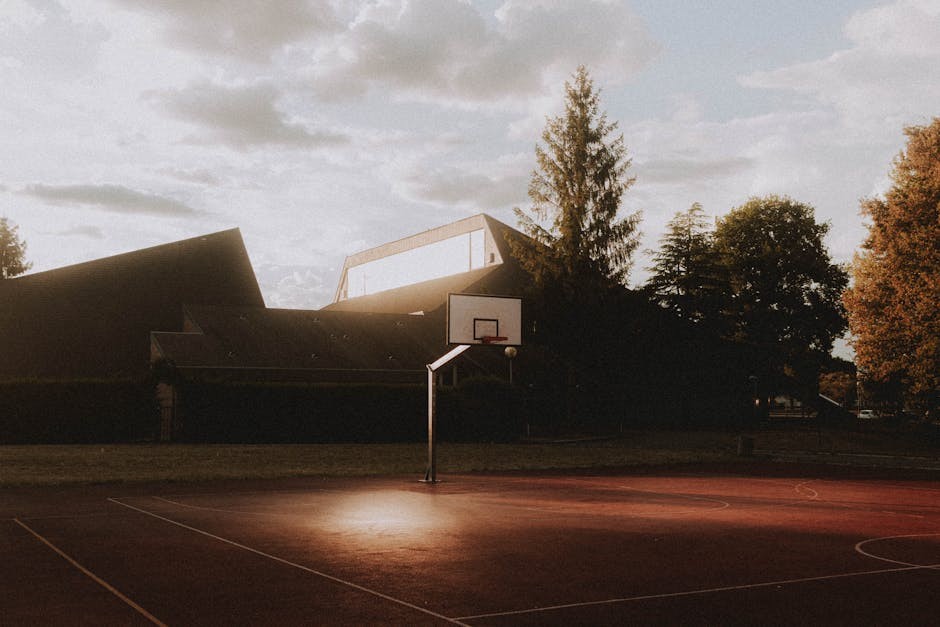
Outdoor basketball courts are community-oriented, enjoyable, and fiercely competitive. Unlike indoor counterparts, they are always in direct sunlight, rain, and temperature fluctuations that may quickly ruin the playing surface. Choose the right flooring material; the lifetime, safety, and performance of outdoor spaces depend on weather-resistant floor tiles. Years to come of a good playing experience depend on these tiles. Knowing their protective qualities and performance benefits helps court owners make better choices for a more long-lasting and enjoyable basketball environment.
The Hard Fact of Outdoor Exposure
Constantly attacked by elements that might compromise their surface, outside basketball court are UV light from the sun causes asphalt and concrete to fade, fracture, and becoming brittle. Rain is problematic and creates water ponding, which disturbs gameplay and encourages mold and mildew growth. Extreme temperatures—from scorching summer heat to frozen winter cold—may expand and shrink materials, leading to stress fractures and other damage. These factors show that outdoor court usage calls for a sturdy and weather-resistant solution; an ordinary surface is not fit. Without protection, interruptions in maintenance and play time may quickly mount up.
Weatherproofing: An Element Protection Mechanism
Floor tiles classified as weatherproof are meant to resist the elements. These tiles resist moisture and won’t break under rain by means of polypropylene or high-impact copolymers. UV inhibitors either absorb or deflect harmful rays to stop structural weakening and fading. The interlocking design of these tiles allows expansion and contraction, therefore lowering the temperature-related cracking. These design features enhance outdoor playing grounds. Often requiring re-coating and fast degrading, painted asphalt or concrete is not as durable or low-maintenance as these tiles. Features like weather-resistance allow court owners to optimize their investment and minimize upkeep.
Reduced maintenance and longer lifespan
Two important benefits of weather-resistant tiles are longevity and less maintenance required. These tile surfaces’ durability helps them to withstand intense play without breaking like other surface materials. Less often occurring repairs, resurfacing, and repainting help to save money. Since these tiles interlock, installation and maintenance of them are easy. Modularity lowers upkeep and allows easy repairs free from significant rebuilding requirements. Less maintenance for weather-resistant tiles frees facility owners more playing time, less disruption, and a better return on investment. Choosing a robust, low-maintenance solution will free owners to focus on outdoor basketball court enjoyment and community value.
Superior Performance and Safety
Playing conditions and athlete safety benefit from weatherproof tiles. The rough surface of the tiles for outdoor basketball court provides exceptional grip even in damp conditions, therefore minimizing trips and falls. The level surface reduces dead areas of fractured asphalt or concrete by improving ball bounce and accuracy, thereby lessening of imperfections. By means of their controlled shock absorption, these tiles minimize joint strain and fall impact, therefore preventing injuries. Consistency of ball bounce enhances training and performance. Safer, more playable, and more player confidence boosting weather-resistant tile surfaces
Issues of sustainability and environmentalism
Tiles resistant to weather might help outdoor basketball courts be more environmentally friendly in a better future. Many tiles reduce their environmental impact by being constructed from recyclable or recycled materials. Their lengthy lifespan lessens the need for regular replacements and the use of raw materials during building and reconstruction of a court. Long product life cycles help to reduce court resurfacing waste. With this ecologically friendly approach, one achieves responsible resource management and an aesthetically pleasing athletic venue. Using sustainable materials allows facility owners and players to create a responsible, enjoyable outdoor playing environment.



